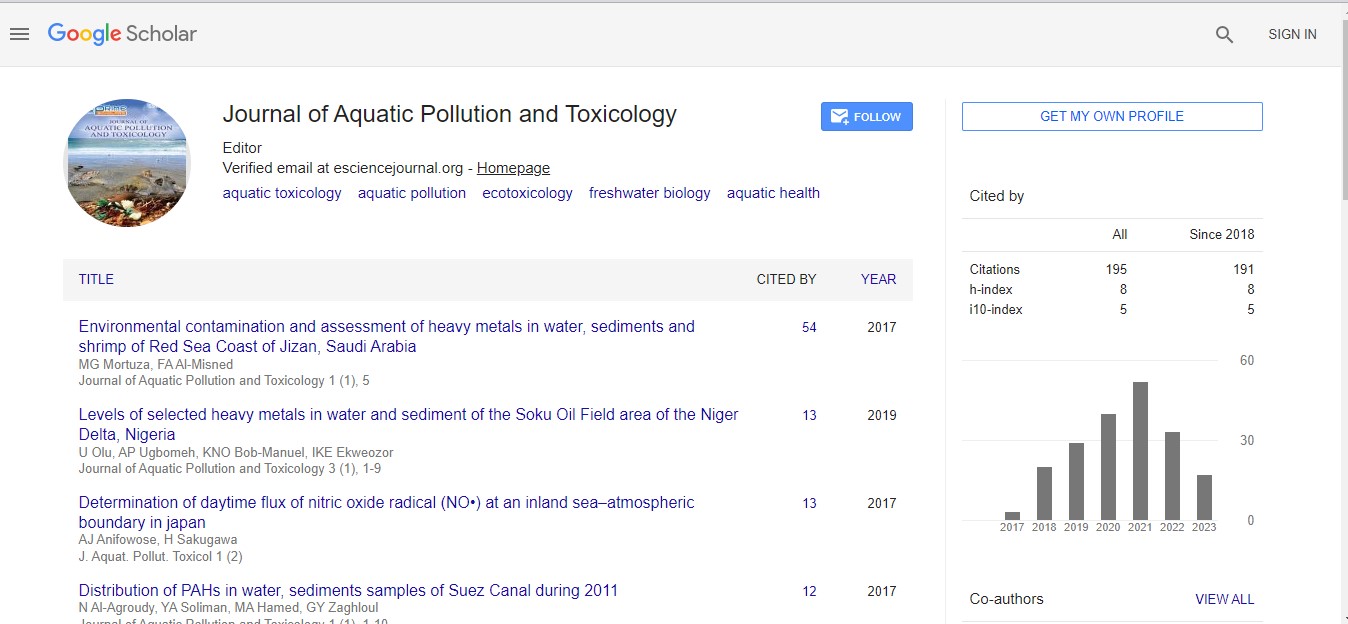Sushma Scindia*
Department of Environmental Studies, Barkatullah University, Bhopal, India
- *Corresponding Author:
- Sushma Scindia
Department of Environmental Studies
Barkatullah University, Bhopal, India
E-mail: sushmascindia64@rediffmail.com
Received: January 02, 2021; Accepted: January 15, 2021; Published: January 22, 2021
Citation: Scindia S (2021) Current research on environmental toxicology. J Aquat Pollut Toxicol. Vol. 5 No. 5: 3.
Journal of Aquatic Pollution and Toxicology expresses Environmental toxicology, area of observe withinside the environmental sciences this is involved with the evaluation of poisonous materials withinside the surroundings. Although it's far primarily based totally on toxicology, environmental toxicology attracts closely on standards and strategies from different fields, including biochemistry, mobileular biology, developmental biology, and genetics. Among its number one hobbies are the evaluation of poisonous materials withinside the surroundings, the tracking of environments for the presence of poisonous materials, the results of pollutants on biotic and abiotic additives of ecosystems, and the metabolism and organic and environmental destiny of pollutants.
Thus, toxicology is one of the numerous multidisciplinary regions of environmental science. Some of those regions overlap and percentage not unusualplace things. The presence of poisonous materials withinside the surroundings at degrees defined as deadly or inflicting dangerous results to the existence is taken into consideration a critical problem. On the opposite hand, in aquatic toxicology, check organisms are poikilothermic, i.e., they're cold-blooded; their frame temperature is variable and typically depending on environmental temperature; for this reason toxicity might not be sufficiently predictable. In mammalian toxicology, the ‘dose’ of a check chemical may be measured at once and accurately, and administered via way of means of some of routes.
Mercury is a evidently happening metal, a beneficial chemical in a few merchandise, and a capacity fitness risk. Mercury exists in numerous forms; the kinds humans are typically uncovered to are methylmercury and elemental mercury Elemental mercury at room temperature is a shiny, silver- white liquid that could produce a dangerous odorless vapor Methylmercury, an natural compound, can increase withinside the our bodies of long-living, predatory fish. To maintain mercury out of the fish we devour and the air we breathe, it’s essential to take mercury- containing merchandise to a risky waste facility for disposal. Common merchandise bought these days that incorporate small quantities of mercury encompass fluorescent lighting fixtures and button-mobileular batteries.
Emerging problems inclusive of the observe of the reassets and results of microplastics that would turn out to be a part of the human meals chain. Learn extra approximately microplastics.
Biotic Degradation: Microorganisms inclusive of fungi and bacteria are high elements accountable for biotic degradation. These microorganisms degrade chemical compounds to acquire power from those reassets. It takes place at a fairly elevated rate, some distance exceeding abiotic degradation Bioaccumulation: It is a manner in which organisms collect themselves with chemical compounds from nutritional reassets or from an abiotic surroundings. And thru passive diffusion, those organisms soak up those poisonous chemical materials. Some of the number one organs that uptake this poisonous consists of gastrointestinal tract, gills, and lungs. But different organs inclusive of scales, skin, feathers, fur, etc. acts as a protecting barrier in opposition to numerous chemical.

